Two surviving members of Stony Island freestyle in front of Attica’s memorial wall. Video excerpt from an upcoming documentary by Sarah Friedland and Esy Casey. On the last weekend of this past March, a crew of artists, filmmakers, musicians, and friends gathered around a memorial wall on the side of Hyde Park’s Kinko’s, in the alleyway a few doors down from the Medici on 57th Street. The wall itself has been in continuous transition over the last decade, cycling through stages of decay, renewal, and transformation. But one figure has been constant: a goofy, fish-eye perspective portrait of a young man grinning eagerly down at the passers-by.
Though many Hyde Parkers recognize the image, few seem to know the story of the young man memorialized on the wall. Fewer still know that this year marks the tenth anniversary of his death, or that those men with spray cans, and the young women filming them, were there to celebrate the life of one of Hyde Park’s earliest hip-hop pioneers as well as one of the neighborhood’s most beloved sons.
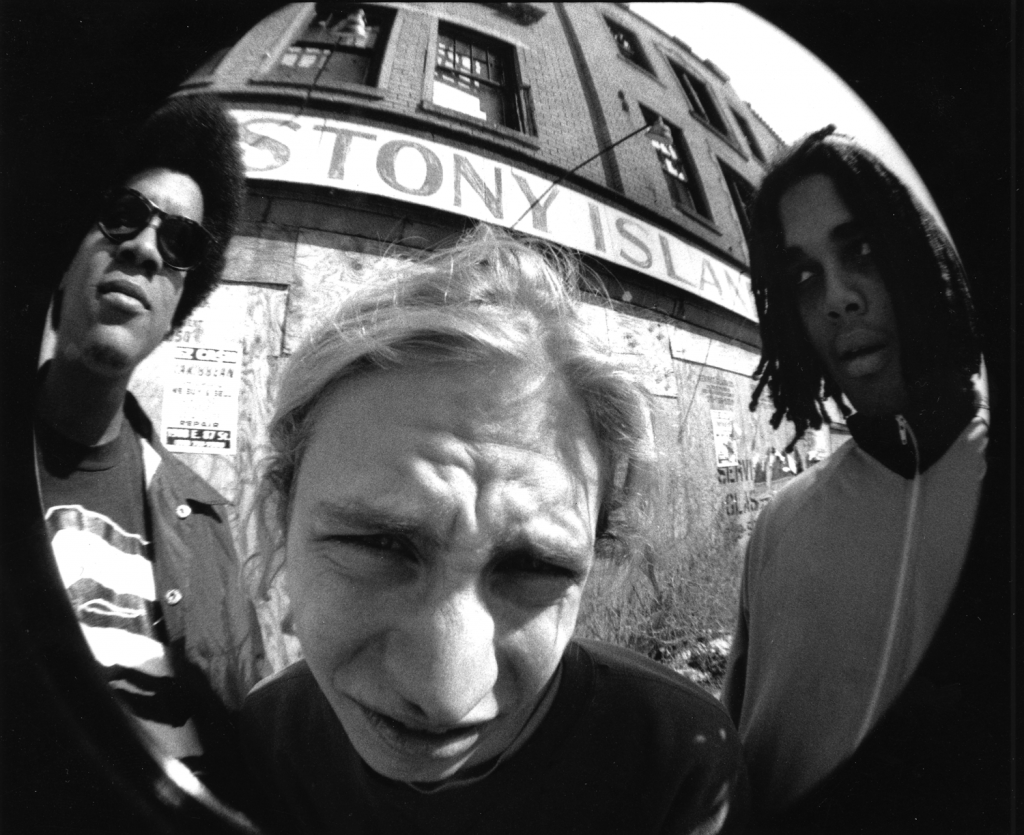
The name of the young man in the portrait is Wyatt Mitchell, but to some in the neighborhood he was better known as Attica. This, his tag name, was a common sight for those who were paying attention to street art in Chicago during the late eighties and early nineties. Wyatt, who was initially associated with the Chicago-based Jam Crew, was one of the most prolific taggers on the South Side at a time when the city was beginning to crack down hard on graffiti.
According to LaVie Raven—legendary graffiti writer, rapper, teacher, and co-founder of the University of Hip-Hop, an organization dedicated to teaching the elements of hip-hop in the context of community activism, as well as a close friend of Mitchell’s—Wyatt was one of the last graffiti writers remaining for a generation that was “either getting in trouble, going to jail, or getting jobs.”
“Attica had so much covered on the South Side,” Raven says, standing in front of the spray-painted portrait of his late friend, who also sometimes used the tag names Glue2 and Wiot. “Eighty-nine through ninety-two was a time when graffiti had down-sloped and there were basically five writers in the city: Attica, Nerd, and a few guys on the West Side—who were still killing it.”
Raven first met Wyatt—then a wiry high school kid who kept his blond hair tied back in a ponytail—at Raven’s apartment on 53rd Street and Kimbark Avenue. The two quickly bonded, not only over graffiti, but also their shared dietary restrictions. Wyatt was an adamant vegan, while Raven, a self-identified Black-Hebrew Israelite, maintained a kosher diet, and neither man could eat the pork chops that Raven’s roommates were grilling in the apartment.
Wyatt soon told Raven that he was also interested in becoming more active in hip-hop and was learning how to rap. Though Raven notes that, at the time, Wyatt’s flow was “a little off-beat,” he was impressed by his enthusiasm. “I loved his energy, so I brought him to the crew,” he says.
Part of that crew was a rap group called Stony Island, which included LaVie “LP” Raven as the lead MC and Alex (“Lunchbox”) , both of whom showed up this April in front of Wyatt’s wall. But the crew was also much, much bigger than the three of them and their DJ.
“We had the rap group, but we also had this massive, extended group,” Raven says. “SB [Spray Brigade] were the graffiti writers. There were the Brickheads, who were the break[danc]ers, and there was Stony Island, who were the rappers. We had like forty people total, many of them were ‘renaissance hip-hoppers,’ which means someone who practiced more than one of the art forms. We kind of all bled together and performed together.”
The extended crew was one of the earliest hip-hop collectives in Chicago at a time when the South Side music scene was dominated by house. “Chicago was house nation,” Raven says, “but there were two nations going on at the same time: house and hip-hop. When we were younger, house was bourgeois. I couldn’t afford the clothes.”
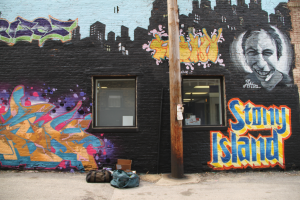
This class divide between genres led many Chicagoans to either ignore or actively shun the city’s earliest hip-hop crews. In a 1993 cover story for the Tribune, William Upski Wimsatt—along with Chicago music columnist Greg Kot—turned to his friends in Stony Island and asked them to explain why Chicago rappers were not getting the same attention as east and west coast artists. Wimsatt, a fellow graffiti writer, would later gain attention for his provocative essay collection, Bomb the Suburbs, which he published in 1995 at the age of twenty-one.
In the Tribune piece, which ran with the headline “Why Chicago Artists Have Been Outcasts Of The Hip-hop World,” Raven wrote that part of the problem came from hometown animosity. “Back in the day when we used to rap out in front of Kenwood [Academy], they used to throw berries and rocks at us because it was a ‘house’ school and house was the mainstream.”
The lack of interest in Chicago hip-hop confined Stony Island’s following to a core group of local supporters. With Wyatt, the group released three albums, including two cassettes, Creatures from the Urinal and a self-titled follow-up, as well as a vinyl EP called Supertransfer Good All Day. The cassettes were recorded by Dr. Dosage, the alias of a drummer from the Chicago punk band Naked Raygun, who charged them a discounted rate of a dollar an hour for studio time because they thought “that there was something deep going on in the lyrics,” according to Stony Island’s beatboxer.
The group also drew some attention for what was labeled at the time as their “multicultural” appeal. The fact they had Wyatt, a white rapper, was not necessarily a novelty—Raven points out that the graffiti community was far more racially diverse than is often acknowledged today—but it did attract attention from different communities.
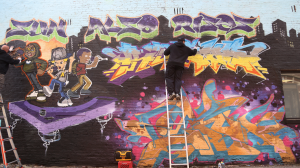
“With Wyatt,” Alex says, “we were able to get into ska shows, rock shows, all different sorts of venues.” Yet for Raven, Wyatt stood out more for his talent than his race. “I don’t think Wyatt’s being white was an issue at all,” he says. “Wyatt had attitude, he was a street performer. He was willing to battle too. He could battle his whole crew and beat them.” Wyatt also separated himself from other white artists involved in hip-hop, according to Raven, because he was more aware of the place he occupied on the South Side.
“Wyatt was the first white person to talk to me about white privilege,” says Raven. ”Wyatt [was the one who] said, ‘I know that when I’m in a particular place with a black man, the police can pull us both over, but I can talk my way out of it [because] I’m blond haired and white.’ He would always check himself. I never heard a white person honor it and say that they wouldn’t step in a certain way because of that,” says Raven.
Wyatt’s group did manage to attract attention from two high-profile New York-based hip-hop groups: the Beatnuts and the Beastie Boys. The latter provided funding for Raven to start the University of Hip-Hop.
The Beastie Boys were initially interested in Stony Island’s beatboxer, though they later became friends with Wyatt. In 1993, they invited him and the rest of the crew, including the Brickheads, to come backstage before a show in Detroit. “Wyatt was the only one that got on-stage with them though,” Raven says, “because Wyatt was brave.”
Despite Stony Island’s high-profile supporters, the group never managed to sign a record deal. Their last vinyl LP was self-produced and self-released, and the results proved lackluster, according the group members. Though the last release did include the classic CTA-themed anthem “The Train Goes Slowly On The South Side,” the album itself quickly went out of print.
Today none of Stony Island’s music is officially available for purchase, though a couple of their later tracks can be found on YouTube and some of their cassettes and LPs remain in the hands of friends, family members, and collectors. By contrast, two of the other “outcast” artists profiled in Kot and Wimsatt’s piece—Tung Twista and Common Sense—did not remain outcasts for long. Both rappers signed record deals with major label subprints and released albums the following year, under new abbreviated monikers: Twista signed with Warner Music Group subsidiary Atlantic Records, while Common signed with Relativity Records, a subsidiary of Sony Music Entertainment. Both are now household names in hip-hop across the nation. Stony Island, meanwhile, is a name known only to few.
The differences in fame, however, do not, to Raven, reflect a difference in credibility. The Stony Island MC claims that Common and Twista were really “latter”-era hip-hop artists, who built upon the styles of earlier hip-hop artists after the genre gained more widespread support. “When house started to go downhill, a lot of those dudes decided they were gonna become hip-hop,” Raven says, “but Wyatt was already hip-hop.”
As Wyatt was becoming a local legend in the hip-hop world, he was also living a life somewhat typical of a Hyde Park kid. His community was largely centered around Ray Elementary and Kenwood Academy. At both schools he gained a reputation for being charismatic, kind, and loyal. And as a member of Kenwood’s improv group, Those Damn Kids, he also proved himself to be a natural performer and entertainer. He also had talent for constantly meeting and forming relationships with new people within the neighborhood. “He could go to a movie,” says Christine Mitchell, his mother, referencing a story told to her by Wyatt’s then-girlfriend, Chloe, “and Wyatt would go to wait in line. Five minutes later he would come back with four new friends.”
The son of Doug Mitchell, an alumnus of the UofC and a longtime editor for the university press, Wyatt grew up in a family with deep connections to the UofC and the academic world of Hyde Park. Doug is a jazz drummer for the Curtis Black Quartet, which plays Sunday night sets at Jimmy’s Woodlawn Tap, and has helped to publish many significant critical works on jazz.
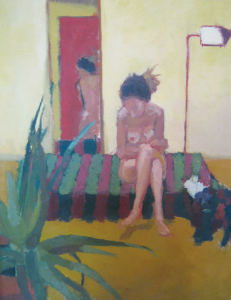
Wyatt inherited his father’s interest in music, and jazz in particular, and also learned the basics of drumming. Yet Wyatt initially differed from his father in his struggle with reading. According to his mother, Wyatt grew up “somewhat dyslexic.” Though he later became an avid fan of authors like James Joyce and Thomas Mann, his early years were mainly occupied by non-verbal art forms.
His mother, who is also a painter, recognized early on that her son had a particular knack for visual expression. “Drawing was our way of communicating,” says Christine. “One thing that he had, that was really a gift, was a sense of color.”
This gift manifested itself not only on the walls where Attica left his tag, but also in the studio at Antioch College, where Wyatt began developing his skills as a studio painter, finding inspiration in the works of the Dutch master Johannes Vermeer and the Bay Area figurative pioneer Richard Diebenkorn.
While he was finishing high school, Wyatt’s parents urged him not to let his music career derail his pursuit of a college degree, though they were generally supportive of his interests in hip-hop and graffiti. Christine Mitchell, was particularly worried about the fact that her son rarely seemed to take precautions. “I’m not one for only idealizing those who are dead,” she says. “[Wyatt’s] major flaw was not being cautious, not looking around the corners.”
“I knew Wyatt’s parents,” says Raven, who used to pick Wyatt up from his house before going to paint walls around the city. “They were cool with the rapping stuff, but I think any parent who knows their son is involved with graffiti, and knows there’s another graffiti writer coming to pick them up, is going to be uneasy.”
Graffiti, however, was not what ultimately got Wyatt into trouble.
His friends and family are unsure exactly how it was that Wyatt became involved with the use of hard drugs. Raven believes Wyatt may have experimented with drugs after moving to school in Ohio. “Antioch and Oberlin were drug experimentation havens,” he says, “because they are these small liberal arts schools in the middle of the country.”
Wyatt’s use of hard drugs, however, didn’t begin until several years after he had graduated from college and moved back to Chicago.
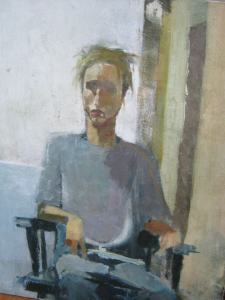
Wyatt had spent some time travelling before he returned home in December 1998. According to family and friends, his use of opiates was connected with relationships he formed while working on the North Side. Raven remembers seeing Wyatt with groups of people from Wicker Park whom he had not seen around him before, and whom he suspected of being active users. Wyatt’s dependence did not become apparent to Raven until he came back to Hyde Park, where he worked for a while at the Medici, across from the wall where his memorial now stands. There, he saw that his old friend was in bad shape. “We knew that he had been having the battle with the psychosomatic aspects of addiction when using certain things,” Raven remembers.
Wyatt’s parents devoted much of their time to home interventions and efforts to try to help their son get clean. “We don’t have a lot of money,” Doug says, “so we couldn’t afford to send him to one of the live-in clinics that charge $30,000 for their stay.”
Starting in 2001, Wyatt did manage to kick his habit for several years, mainly through self-determination and treatment. He also realized that he needed to leave Chicago and the neighborhoods he now associated with his addiction. He was deeply affected by 9/11 and decided to move to New York to be closer to the people living there, as well as to begin work at a spraypaint manufacturing and distribution company. Two years later, he moved to Atlanta, where he returned to studio painting and began selling some of his artwork, and planned to open his own gallery and pursue an MFA. In both cities, he managed to abstain from drug use.
It was only after he returned to Chicago, about a week after his thirtieth birthday, that he relapsed.
The night of Wyatt’s return, his friends held a celebration. Some of these were old friends, like the members of Stony Island. Others were later acquaintances who were themselves still dealing with drug abuse, and may have been enabling. The night ended at the local bar. “Raven was the last person to ever see Wyatt alive,” Doug says, while setting up for his weekly set at the Woodlawn Tap. “They had their last conversation right here in Jimmy’s.”
That night, Wyatt returned to his room, where he died of an accidental overdose of opiates, roughly fifteen minutes after midnight. His mother found him in his room the following morning. The only item found in his backpack was one of her books: a paperback copy of James Joyce’s Portrait of the Artist as a Young Man.
Wyatt’s death came as a shock to his friends and family, yet the nature of his death did not change the memory of his life for those who knew him well. It was the result of single fatal accident, a “bad mistake” in the words of his mother, not representative of his life or his work. As a result, the memorial, which was held at Promontory Point two weeks after Wyatt’s death, was not so much a grim funeral procession as it was a cathartic memorium for the life of a Hyde Park artist and son. As Doug Mitchell recounts, the memorial also included “a very moving post-memorial ceremony at Jimmy’s, where our rhythm section backed up the rappers who freestyled in honor of Wyatt, and formed a prayer circle for me during the break.”
The service included speeches from people who had, or were currently, struggling with drug addiction, as well as eulogies from Wyatt’s friends and family. Doug’s friends and associates from the university spoke, including art historian W.J.T. Mitchell and literary theorist Wayne C. Booth. The typed transcripts of the speeches, which were delivered by friends and family members, have been saved, for the last decade, by the Mitchell family.
Wyatt’s sister Gloria wrote in her eulogy that “Wyatt and I were raised in a tradition of free thought rather than one of religious guidance. We are not in what people think of as a traditional setting for a memorial, nor are we having a traditional service.” An art professor of Wyatt’s described his iconoclastic style as a student—one who would often call out his Yale-trained mentor for having “wack” ideas, but would also produce “paintings that were like prayers.” His cousin, Miles Chatain, wrote about Wyatt “as an artist, a performer, [and] a poet” whose “truly special gift was people: the way he could talk with people and find an instant connection, a bond, with just about everyone he came across.”
Some of the most powerful of these eulogies, though, were the ones left unpreserved. Doug Mitchell remembers the tributes given by Raven and other members of Stony Island—unwritten, off-the-cuff, and improvised—as perfect embodiments of his son’s life. “I’ve asked LaVie if he’ll write them down one day,” he says. “I would like to collect them in a book.”
Instead of writing down his words, however, Raven chose to preserve his own memories of his late friend through his art. After the ceremony at the Point, Raven and several other artists from the collective repainted the 57th Street wall, which had been a permission wall where graffiti artists associated with Wyatt were allowed to put up their pieces. Some of Wyatt’s original artwork still remains on the wall today. The most striking aspect of the wall, though, is the portrait of Wyatt, which was re-created from a fish-eye lens photo of the Stony Island crew. Wyatt grins prominently in the center of the frame.
While the wall at 57th Street was being remade and dedicated to the deceased artist, another tribute to Wyatt was being sprayed on the other side of the country in Queens, New York. There, the aerosol artist Nic 1 created a piece dedicated to Wyatt’s afterlife, complete with harp-strumming angels, and heavenly clouds adorning the word “Mitchell.” Now, after his death, it was safe to link Wyatt Mitchell’s street-art with his legal name.
The piece was put up at 5 Pointz, the historic mecca for graffiti in Queens, New York, and it was later included in a profile about the legendary building in the August 8, 2004 issue of The New York Times. 5 Pointz was whitewashed in November 2013. Other pieces created by Wyatt and his associates in Chicago were also whitewashed in 2006, when Alderman Toni Preckwinkle ordered the removal of the 47th St. Metra murals. A third permission wall associated with Wyatt’s crew, the graffiti mural that once stood on 53rd Street behind the Mobil gas station, was removed earlier this year in order to make way for the new Vue53 apartment complex.
The 57th Street mural, however, remains. “This was Wyatt’s wall first,” Raven says, “It was always called the Wyatt wall.”
Now, ten years later, Raven and others from the crew have returned to paint the wall again, for the third time, as a celebration of their fallen friend’s life. They were invited to re-do the piece after one of Wyatt’s former co-workers, Kai Shkymba, contacted Sarah Friedland and Esy Casey, two filmmakers from the Bedford-Stuyvesant neighborhood in New York. He asked if they wanted to film the wall for their documentary project on American memorials and alternatives to traditional funeral services. The filmmakers had no idea that it would be the tenth anniversary of Wyatt’s passing.
“It was just the serendipitous beauty of the universe and harmonic convergence,” Raven says. This time, Raven added a line from Ecclesiastes 1:5 above Wyatt’s original piece: “The Sun Also Rises.”
“That was a phrase that Wyatt put across the wall the first time.” Raven says. “Now, I put it up in a completely different style, but I chose to recreate his phrase across the top. That was his slogan.”
Doug Mitchell is unsure why his son chose that phrase as his motto, considering that “he was never a big Hemingway guy.” Yet the quote proved, in a way, prophetic of the future of the wall, which continues to be renewed, though the signature remains the same.
Some have tried to have the wall removed. Doug Mitchell says he was once, by chance, standing in the alley with a co-worker when a huge graffiti-removal truck pulled up in front. “If I hadn’t been there at the time, I don’t know what would have happened,” he says.
He also says that he has heard complaints from some in the community who say that the lives of those involved with drugs shouldn’t be memorialized. Wyatt’s parents object to this limited view of their son’s life. “It was only two years out of thirty that Wyatt was involved with drugs,” his mother says, “He really wasn’t himself at that time. That period shouldn’t define his whole life.”
For Wyatt’s family and friends, the best way to understand and connect with Wyatt’s life today is through his artwork.
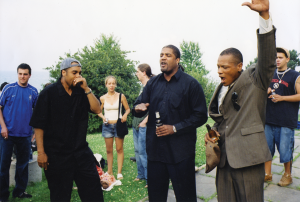
“Wyatt was part of this active artists’ community,” Raven says, “so it’s almost like a part of Wyatt never passed.” This community and many of Wyatt’s friends, who travelled from all over the world to revisit the mural in Hyde Park, came together to commemorate his life and the tenth anniversary of his passing. Many knew Wyatt as a small child, and returned carrying small children of their own in their arms. Some knew him as a painter, a rapper, a friend, a brother, a son. Everyone there described him in the same terms: funny, warm, supportive and loyal. Many of those gathering at the wall also returned to Jimmy’s later that night, to the place where Wyatt had celebrated his last birthday, to watch his father play with the Curtis Black Quartet.
As the band opened their set with Thelonious Monk’s “Nutty,” it was hard not to be impressed by the strange and amazing web connecting lives throughout Hyde Park and beyond, all bound together by the life of this young artist, whose image remains, still grinning, over 57th Street.
Special Thanks:
This story is very personal, not only for those who knew Wyatt during his lifetime, but also for myself. Doug Mitchell is a close friend of my father, Arthur Goldhammer, a French translator whose first books were published by Mitchell in the late seventies.
I became a Stony Island fan without having any knowledge of Doug’s relationship to the group. It was my friend Julia Dratel, a former employee at Numero Group—a reissue label which has recently expressed interest in re-releasing the old Stony Island cassettes—who first showed me a YouTube clip of Stony Island’s “The Train Goes Slowly on the South Side” two years ago. That song has remained one of my all-time favorites written about Chicago. After I published a short article which mentioned the song, Doug reached out and generously shared not only his son’s story but also his own copy of Stony Island’s last vinyl LP, a gift for which I’m forever grateful. I am deeply indebted to Doug and the Mitchell family and the Stony Island crew for sharing their story.

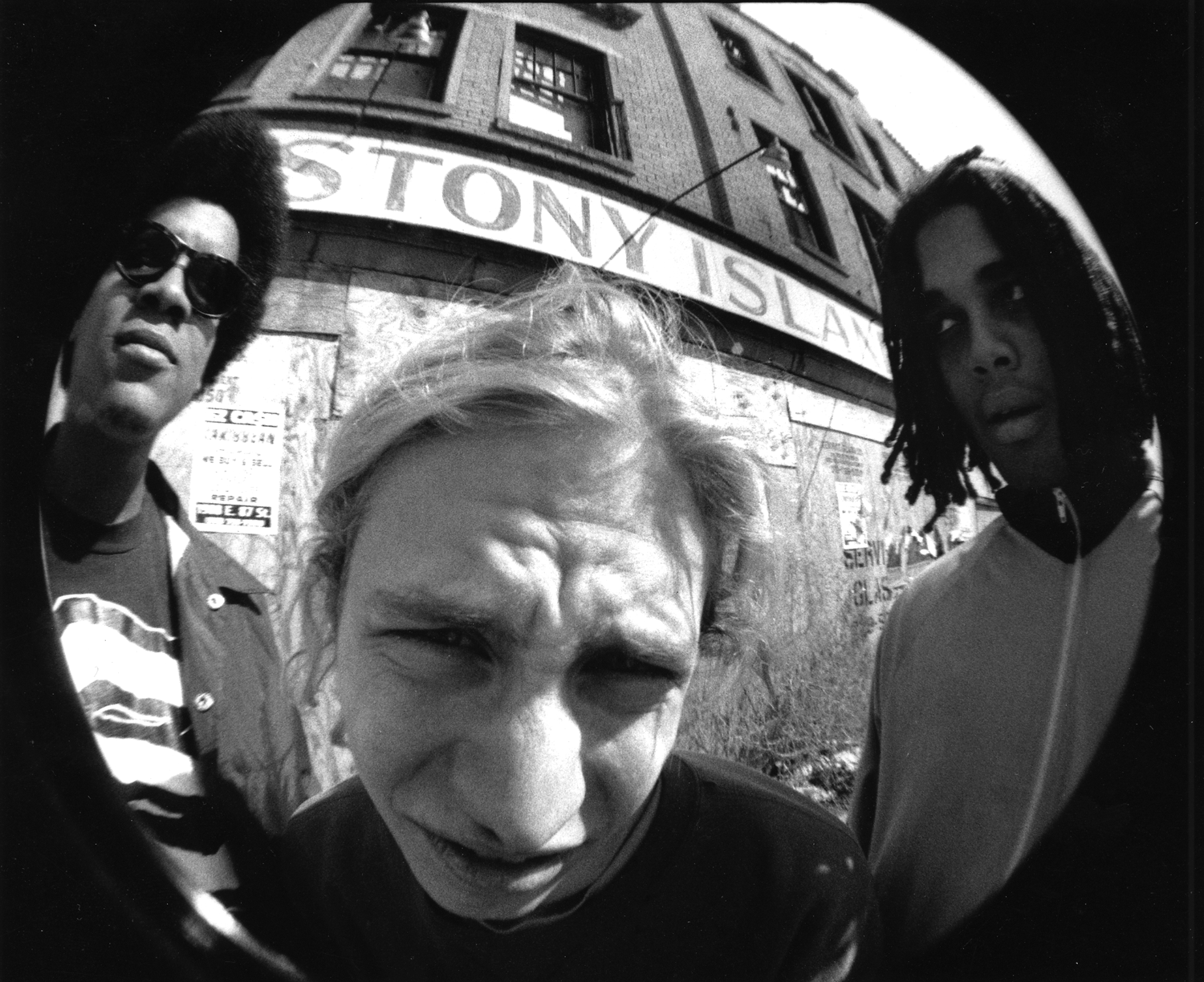
Great article. It’s wonderful to see the sometimes hidden vitality that Hyde Park has as a community. A great delve into another one of the images people walk by every day but never question.
Thank you for sharing this!
I found myself thinking about Wyatt quiet a bit this past Tuesday. I had the pleasure of working with him at the spraypaint company between 2001-2003.
He was living in Red Hook, Brooklyn at the time. Wyatt was a remarkably talented soul with an amazing spirit, who managed to leave a tremendous impression on me.
Wow – great article. I knew Wyatt since at least the 5th grade at Ray School. He was friends with my brother. When we got to high school we started JAM Crew and heavily recruited Wyatt (Attica). Thankfully he agreed to join us.
Dvice Jam